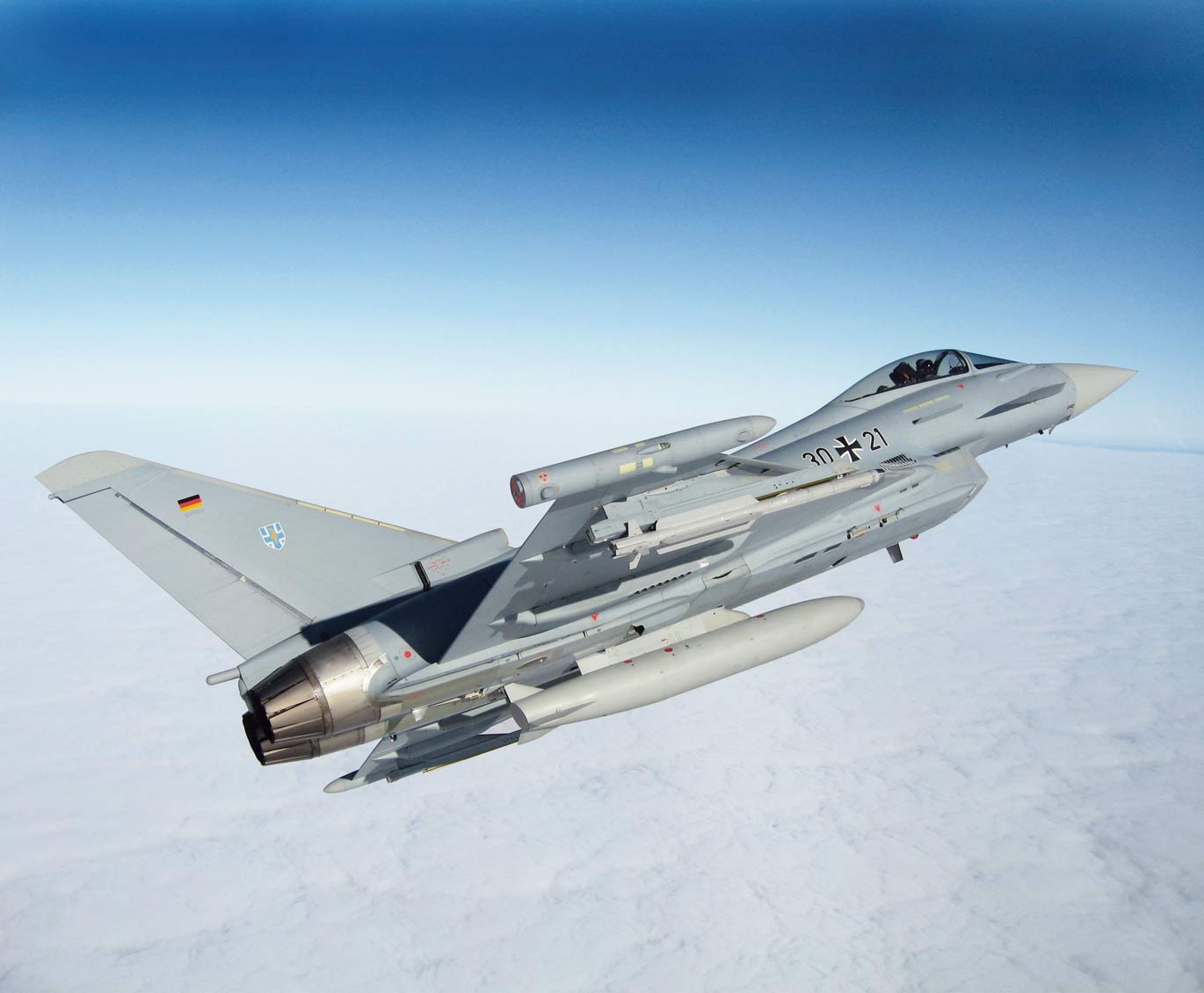German Eurofighter Typhoons: Electronic Warfare System
Praetorian DASS electronic warfare system selected for Germany's new fleet of Eurofighter Typhoons.
29 April 2021

Electronic warfare aircraft: German Eurofighter Typhoon
Germany’s new fleet of 38 Eurofighter Typhoons will be fitted with the Praetorian Defensive Aids Sub-System (DASS) for protection, situational awareness and advanced electronic deception techniques.
The Praetorian DASS protects the aircraft against threats including infrared (IR or heat-seeking) and radar-guided missiles and has been battle-tested on peace-keeping operations in Libya and Syria.
The defensive aids system will be fitted by the EuroDASS consortium, which comprises Leonardo, Elettronica, Indra and Hensoldt.
The new Eurofighter Typhoon aircraft are supplied under the German Quadriga procurement programme, which will see 38 of the latest standard Typhoon aircraft delivered to the German Luftwaffe to replace their Tranche 1 Typhoons.
The Eurofighter Typhoon will be the backbone of the Luftwaffe out to the 2060s.
Electronic warfare systems: Praetorian DASS
Critically, Praetorian is an open and programmable electronic warfare system, which means that Germany is in complete control of its mission data and can boost the survivability of its Typhoons by fine-tuning the system to the actual situation on the battlefield.
Mission data can be fed into the Praetorian system in just hours. In comparison, some other aircraft are equipped with defensive aids systems that include a generic mission data set, with a feedback loop that can take several months.
Further opportunities for Typhoon and Praetorian include additional orders from Spain and Germany as well as future export orders.
Looking towards the future, EuroDASS are keen to de-risk technology for the next generation of fighters. Praetorian presents a stable platform to spiral develop future technology, which will not only provide future capability gain for Typhoon, but also provide valuable knowledge and technology transfer into the next generation of future combat air systems.
Through the Eurofighter Long Term Evolution (LTE) study, EuroDASS are working with Eurofighter partner companies and nations to consider national requirements and how they can be delivered in an agile, cost effective manner, to provide longevity to the Typhoon’s out of service date, whilst remaining supportive to future air combat development work.